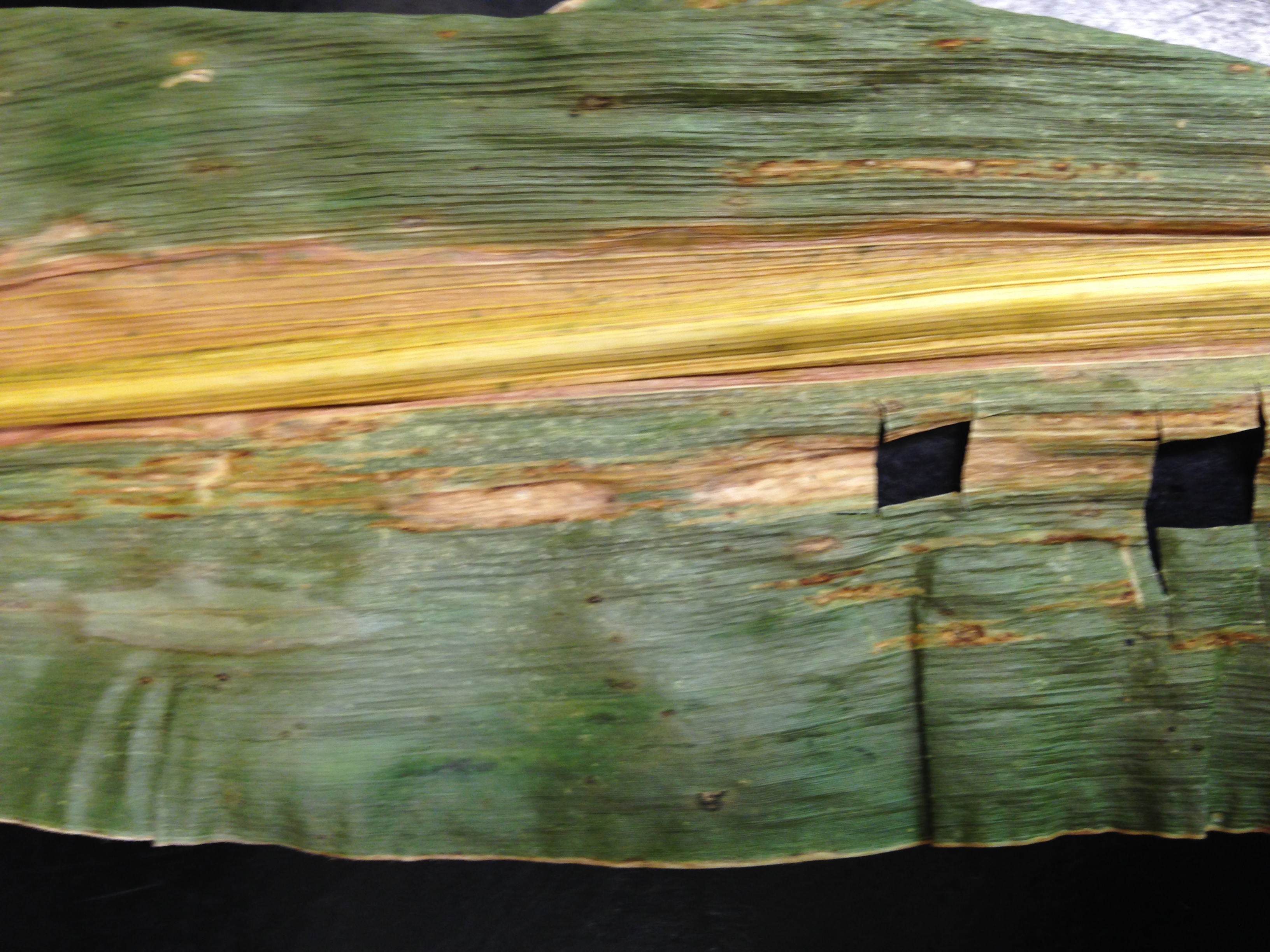By Suzanne Bissonnette, Extension Plant Diagnostic Clinic and IPM Coordinator
Symptomatic corn leaf samples from Champaign County in Illinois have been confirmed positive for the bacterium Burkholderia andropogonis (Pseudomonas adropogonis (Smith) Stapp.), the causal agent of Bacterial Stripe disease by the University of Illinois Plant Clinic. This has been reported to the Illinois Department of Agriculture and the USDA. The pathogen was identified by symptomology, bacterial colony characteristics and 16S DNA sequencing.
Bacterial stripe foliar symptoms unfortunately are similar to other endemic bacterial leaf pathogens of corn, such as Goss’s Wilt and Stewart’s Wilt. Lesions appear initially as lime-green to yellow diffuse discoloration running parallel with leaf veins. As the lesion matures, brown necrotic streaking is evident in the center of the lesion. Lesions may be 2-5 inches or more in length.
This is a new disease to corn in Illinois. There is little current or historical information available on impact to corn yields by this pathogen in the U.S. The bacterium is widely prevalent and infects a large number of plants, including Johnson grass, sorghum, rye and clover to name a few. It is reported that the disease becomes more severe during periods of wet humid weather.
Vidaver and Carlson of the University of Nebraska reported in 1978, that the disease was observed in South Dakota, Iowa, Kansas, Nebraska and Michigan from 1973-75. Conclusions were that the disease caused no economic impact at the time.
Be on the outlook for this disease in corn next season. Be aware that symptoms of this disease may be confused with other bacterial leaf blights, so lab testing may be necessary to differentiate.






